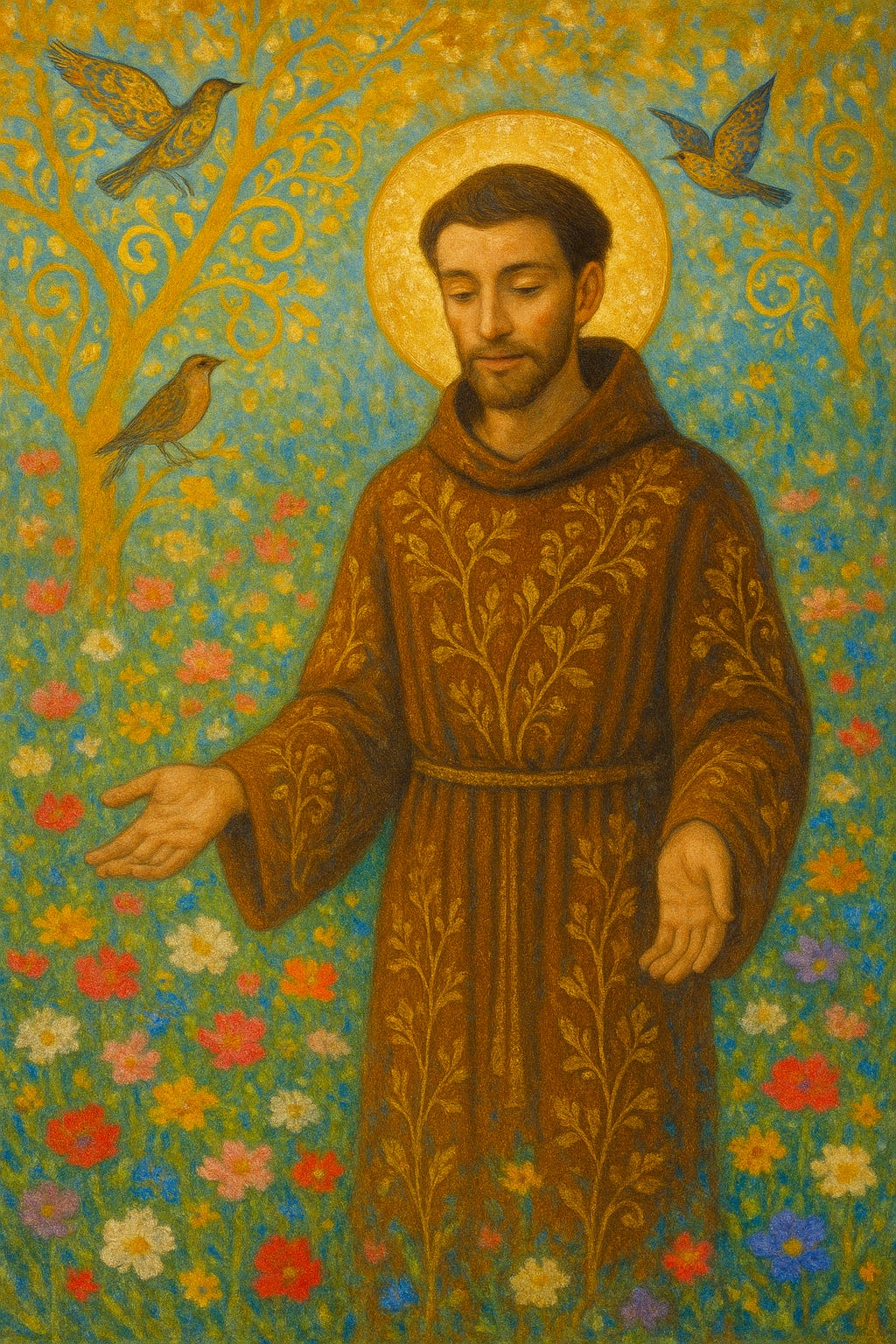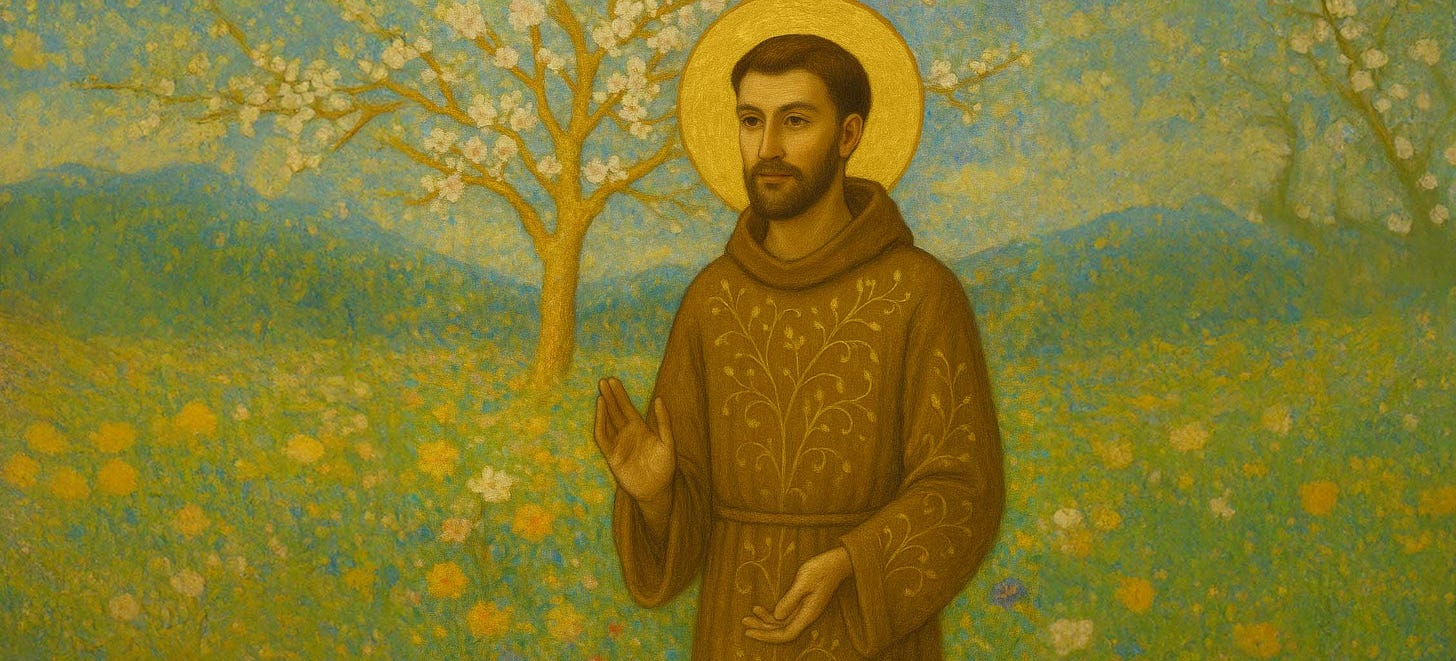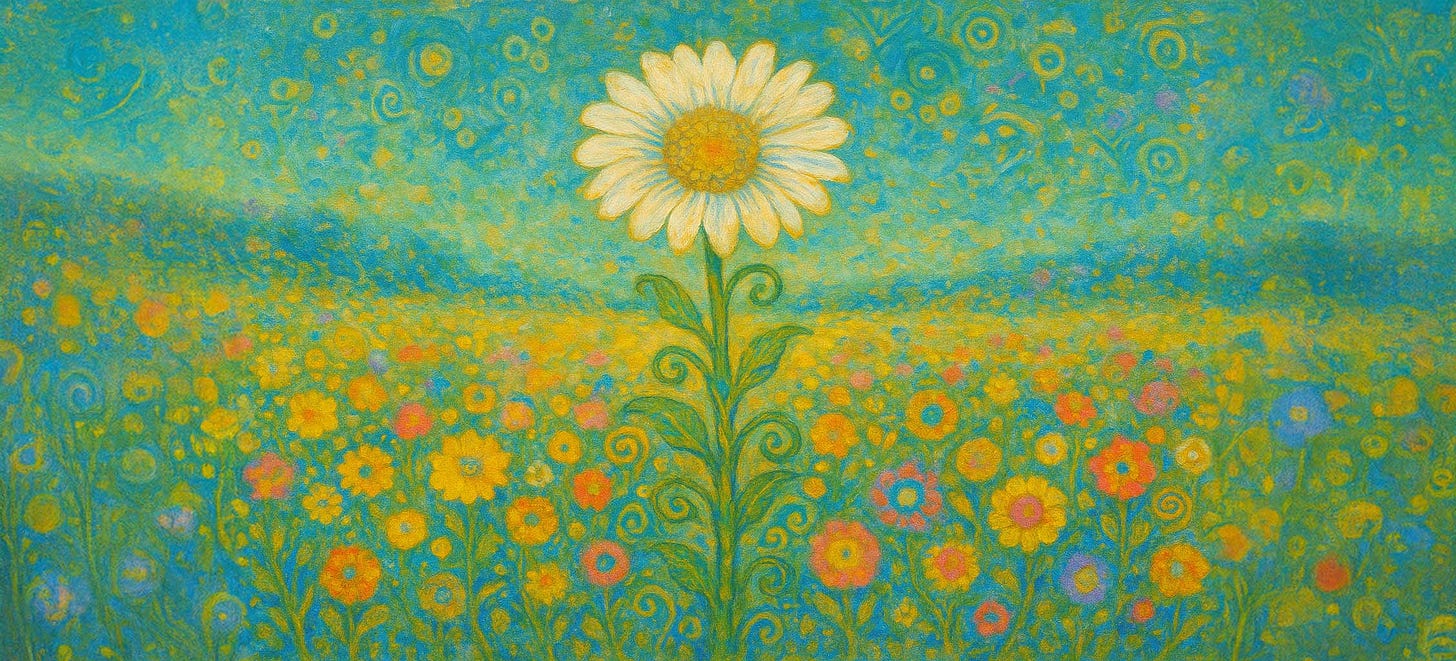I asked ChatGPT to generate a portrait of St. Francis that depicted the saint in traditional iconography and his surroundings—a meadow blossoming, birds gathering—in the style of Klimt. St. Francis would represent the still point of serenity and inwardness in the ecstatic beauty of nature.
After trying different prompts and refinements, I began to get really frustrated—where was the beauty of Klimt? Where was the reverence and profundity of traditional iconography? The Francis it conjured up for me was either dry and solemn, or cartoonish and over-sentimental.
Of course, ChatGPT is only a tool—I shouldn’t blame the tool when my own ability to use it skillfully can be just as much at fault.
But after a while, I began to feel uplifted by my disappointment. I’m happy that ChatGPT can’t match the genius of Klimt, or capture the depth of a saint who is both an ecstatic lover of nature, and a profound presence of serenity, inner fire, and boundless wisdom.
I’ve found that seeing the limitations of AI reminds me of the quintessence of what it is to be human; it reminds me of our inner potential which blazes like a fire that can’t be imitated or replicated.
Ironically, the cheap perfection of AI is bringing a deep appreciation for the hard-earned imperfections of human creativity.
In my process of adding new ‘guides’ to the Oracle, I usually start with a Gene Key first, and then contemplate what figure—historical, mythical, legendary—fits the qualities of that Gene Key.
I associated St. Francis with Gene Key 1: entropy - freshness - beauty.
There is one story from the life of St. Francis that he asked an almond tree to speak to him of God, and it burst into flowers.
Francis’ earliest calling was hearing the voice of God instructing him to ‘repair My church.’ Francis interpreted this literally, dedicating his time and energy to restoring an old chapel outside of Assisi which had fallen into ruin. But over time, he came to realise it was a much deeper calling.
As the story goes, the religious authorities of the time were divided as to whether Francis was genuinely inspired or just a madman.
St. Francis met with Pope Innocent III, who also wasn’t sure what to make of him. But after their meeting, the Pope had a dream: he saw the Lateran Basilica, one of the most important churches in Rome, beginning to crumble and fall—but then a small, poor man came and held it up with his own body, preventing its collapse.
When he woke up, he realised the man was Francis, who he had just met the day before.
So here are the themes of entropy, freshness, and Beauty: the decay and stagnation of forms or institutions as they lose their connection with the indwelling spirit—their renewal through the freshness of inspiration—which ultimately is a reflection of the Beauty of the eternal Now.
I visited Assisi some years ago, and three experiences left a deep impression on me.
The first was approaching the town: I was walking through a field, and ahead of me was a hill rising up with the town of Assisi perched on it. But I felt a vast presence—so vast that the hill and the town itself felt tiny and almost insignificant. I felt this presence was St. Francis—the awakened soul.
The second was when I visited the Basilica of St. Francis. I sat in the Church, visited his tomb, and looked at some relics of the saint on display. What really impacted me were his robes. They were incredibly humble: just a patchwork of what looked like rags and sackcloth. But there was a palpable spiritual power emanating from them. The radical power of total humility.
The third was getting a hug from a Franciscan monk. Pure love, pure open hearted warmth. I felt: this is the spirit of Francis. No asking: Who are you? Do you deserve my love?
Just overflowing kindness and compassion.
Today, I was contemplating, how would St. Francis introduce himself in the Oracle?
These are the words that came for me: the Francis that lives in my heart.
I am Francis.
When God touched my heart
all the things of this world
became like nothing to me.
My clothes, my possessions,
my reputation—
they were only taking up space
where God could dwell
instead.
The more I became empty of the world,
the more I saw
the presence of the Lord
manifesting through the world.
What joy!
What joy!
Who has known
this indescribable
and incorruptible
joy?
And when God sent sorrows
and tribulations,
it was only to strip me
of myself.
So that He
could take my place.
I come to awaken
this great, magnificent and mysterious
truth
in your heart.
That the more you empty yourself
the closer you are
to God—
to ultimate
fullness.
What makes a flower so beautiful,
when a man can be
so ugly?
This happens
when a man is thinking only
of his own glory,
whereas the flower
is not thinking of anything
at all.
It just is.
And so,
it becomes an opening
for God's beauty
to unfold.
Here is a beautiful article about the quintessence of Francis’ teachings that I found very touching and inspiring.
Here’s a link to try the Oracle app, and see who you will meet and what guidance they might have to offer you. Please let me know how it goes!






